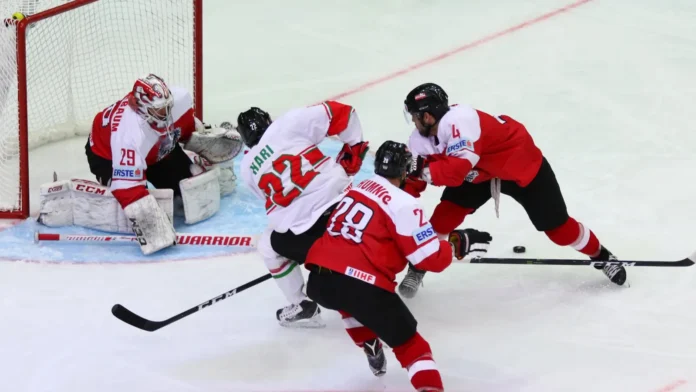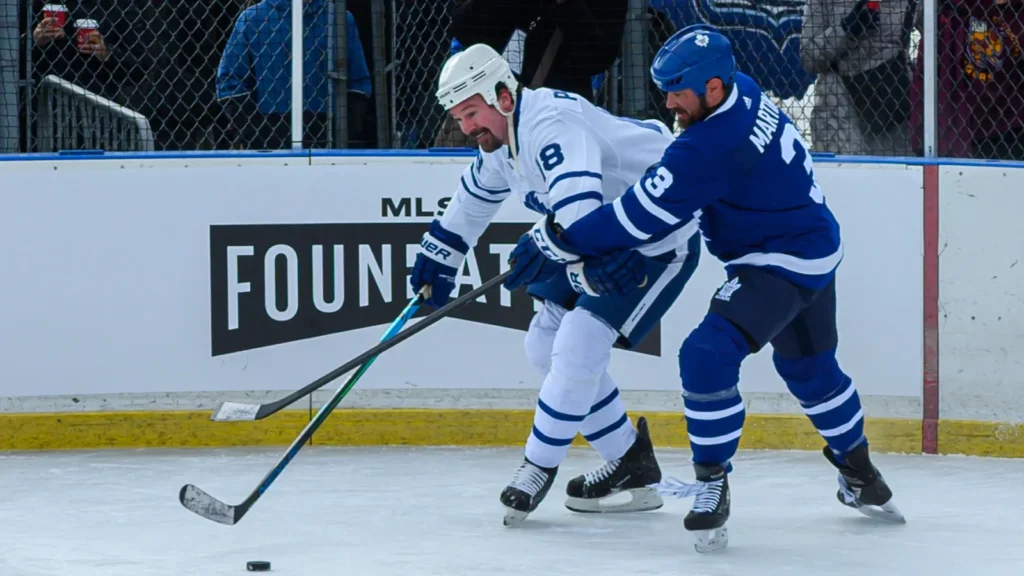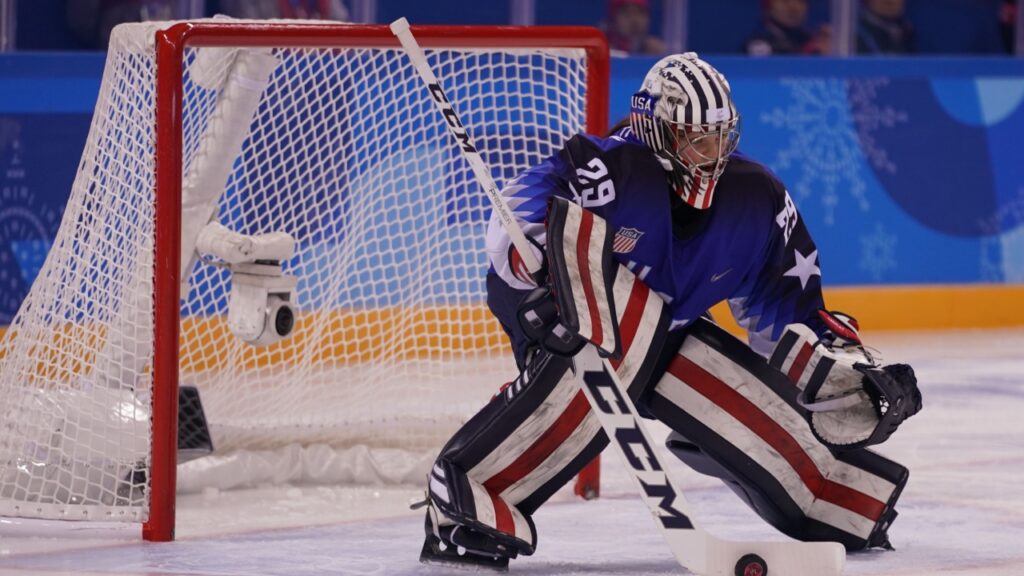
In the NHL, the quality of the ice is one of the most important parts of the game.
It affects how players skate, how the puck moves, and even how safe the rink is for athletes. While fans usually notice only whether the ice looks smooth or rough, a lot of science goes into building and keeping a perfect sheet of ice.
The temperature, thickness, humidity levels, and even tiny layers of water molecules all work together to decide how the ice acts during a game. When everything is balanced just right, the ice becomes fast, firm, and reliable.
When something is off, the game can slow down, the puck can bounce oddly, and injuries may happen more easily. This article breaks down the science behind ice quality in the NHL and shows how rink managers create the surfaces that help players perform at their best.
What Makes Good Ice

Ice Temperature
The most important part of ice quality is temperature. For NHL hockey, the ice surface is usually kept around the low 20s in degrees Fahrenheit. This temperature creates a firm surface that helps players move quickly without sinking too much into the ice. If the ice is warmer than it should be, even by a small amount, it becomes softer.
Soft ice builds deeper skate grooves and makes the ice feel slower. It also increases friction, which means players must work harder to skate. When the ice is too cold, it can become brittle. Brittle ice may crack or chip more easily, creating rough patches that affect puck movement and player safety.
Keeping the temperature stable is a careful process that requires strong refrigeration systems and constant monitoring.
Ice Thickness
Ice thickness also plays a big role in performance. Professional rinks usually keep the ice between about three-quarters of an inch and one inch thick. If the ice is too thick, it takes more energy to keep it frozen, and the surface may not stay consistent. If the ice is too thin, it may not stay strong during a game.
Thin ice can lead to soft spots or weak patches that break down faster than expected. Rinks often build ice in thin layers using warm water. Each layer is frozen before the next one is added. This creates a smooth, stable surface that is the same thickness across the whole rink.
The Base of the Rink
Under the ice, a system of pipes filled with a chilled liquid runs through the concrete floor. This liquid removes heat and keeps the ice frozen from below. The floor must be well insulated so that heat from the building does not travel up into the ice.
Poor insulation can force the refrigeration system to work much harder. That can raise the cost of keeping the rink in good shape and may even lead to warm or uneven spots on the ice. Good insulation keeps the cold where it needs to be and creates a more stable sheet.

The Role of Air and Humidity
Humidity Control
The air above the ice is just as important as the ice itself. If the air inside the arena holds too much moisture, that moisture can settle on the ice. This creates a thin layer of water on the surface, making it sticky and soft.
Players feel the ice drag more under their skates, and the puck does not slide as smoothly. Humidity also stresses the refrigeration system, because the warm, moist air gives off more heat when it condenses. To prevent this, arenas use strong dehumidification systems that keep the air dry. When humidity is kept at the right level, the ice stays fast, firm, and consistent.
Air Temperature and Circulation
Air temperature must also be controlled. Even though the ice itself is kept very cold, the air around it cannot be too warm or too moist. Proper ventilation brings in fresh, cooler air and moves out the warm air that naturally rises from the crowd, the lights, and the equipment. Without good airflow, heat can gather near the ice surface and make some parts of the sheet softer than others.
This leads to uneven spots that players notice right away. Rinks use fans, air handlers, and well-designed vents to keep the temperature steady across the full sheet.
Arena Insulation
To protect the rink from outside weather, arenas rely on insulation in the walls, roof, and under the floor. Good insulation stops heat from leaking in, which helps keep ice and air conditions steady.
If insulation is weak, the building can develop warm zones that cause parts of the ice to soften faster. Strong insulation lets the refrigeration system work more efficiently and allows the ice crew to control the environment more easily.
The Physics of Skating and Puck Movement
Why Ice Is Slippery
Ice is slippery because of a thin, active layer on its surface. Scientists often describe this surface as a quasi-liquid layer. It is not fully water, but not fully solid either. It behaves like a slick coating that helps skate blades glide.
When a skate blade presses against the ice, the pressure and speed can make this thin layer even more active. The result is very low friction, which is why hockey players can move so quickly.
Friction and Ice Quality
When ice is clean and hard, friction stays low. This lets players accelerate, turn, and stop smoothly. But when the ice becomes rough, dirty, or soft, friction increases. This slows players down, makes stopping harder, and changes how pucks bounce or slide.
Even small changes in friction can affect passes and shots. For this reason, rinks monitor the ice closely and resurface it whenever the quality drops too much.
Why Pucks Are Frozen
Pucks are kept frozen before games so they bounce less and slide more predictably. A cold puck stays flatter against the ice and does not pop up as easily when it hits a stick or a rut. It also glides more smoothly because the cooler temperature reduces friction between the puck and the ice. Frozen pucks help keep gameplay fast and controlled.

Why Ice Quality Matters in NHL Games
Player Speed and Skill
Good ice helps players reach top speed quickly. It supports strong edges and quick turns, allowing skaters to perform at the level expected in the NHL. Soft or wet ice slows everything down. Players feel heavier on their skates and are less explosive. This changes how teams move the puck and attack the zone.
Puck Control
Puck behavior changes a lot with ice conditions. On smooth, cold ice, the puck glides true and keeps its speed. Players can pass with confidence and make accurate shots. Rough or uneven ice causes the puck to wobble, bounce, or lose speed. That can disrupt plays, break up scoring chances, and force players to adjust their timing.
Safety and Stability
Poor ice increases injury risks. Ruts, soft spots, and cracks can catch a skate blade and make players lose balance. Hard falls or awkward twists can lead to serious problems. Consistent, firm ice reduces these risks and helps players stay stable through the entire game.
Energy and Maintenance
Keeping ice in perfect condition requires a lot of energy. Refrigeration, dehumidification, ventilation, and resurfacing all use power. Many rinks recycle melted ice water and reuse heat from their refrigeration systems to save energy. These steps help maintain good ice while lowering environmental impact.
Frequently Asked Questions
Q: Why do NHL arenas keep the ice so cold?
A: They keep the ice cold so it stays firm, smooth, and fast. Cold ice reduces friction and helps players skate and control the puck better.
Q: How often is NHL ice resurfaced?
A: Ice is resurfaced before the game, after warmups, and between each period. Some arenas use two resurfacing machines to build a clean surface more quickly.
Q: What is the thin layer on top of ice that makes it slippery?
A: It is a special surface layer that acts like a slick coating. It is not fully liquid water, but it behaves like a smooth, slippery film that reduces friction.
Q: How does humidity hurt ice quality?
A: High humidity causes moisture to settle on the ice. This creates a wet, soft surface that slows players down and makes rink conditions less stable.
Q: Why are pucks frozen before games?
A: Frozen pucks slide better, bounce less, and stay more predictable during fast play.
Q: Can bad ice cause injuries?
A: Yes. Rough, soft, or cracked ice can catch skate blades and make players fall or lose balance.
Conclusion
- Good ice requires careful control of temperature, humidity, and thickness
- The air above the rink affects ice as much as the refrigeration system does
- A special surface layer on the ice helps skates glide with low friction
- Smooth, cold ice improves speed, puck control, and overall play quality
- Poor ice increases injury risks and disrupts the flow of the game
- When everything is balanced correctly, NHL players can perform at their highest level
Read More:
- How NHL Expansion Has Changed the Game’s Geography
- How the NHL Winter Classic Became a Beloved Tradition
- The Truth About NHL Home Ice Advantage
This article was made with AI assistance and human editing.


